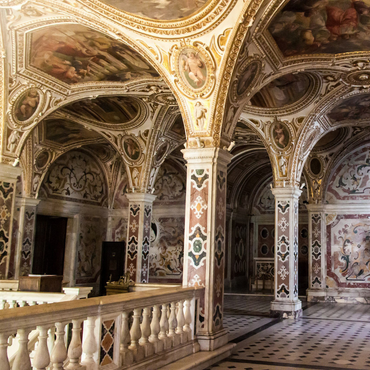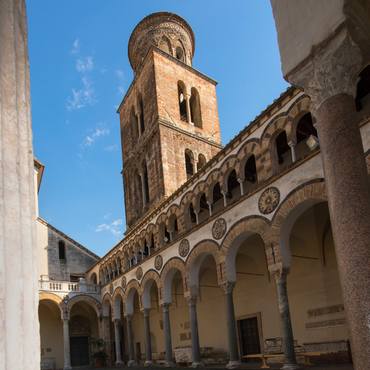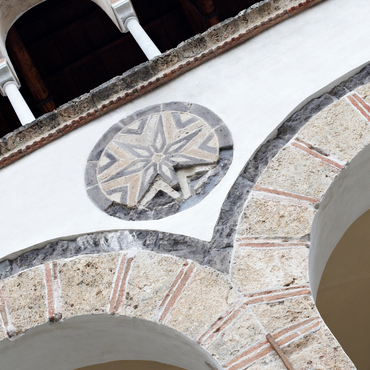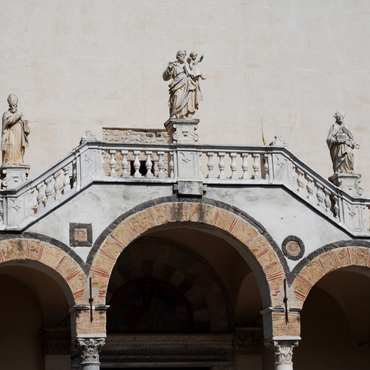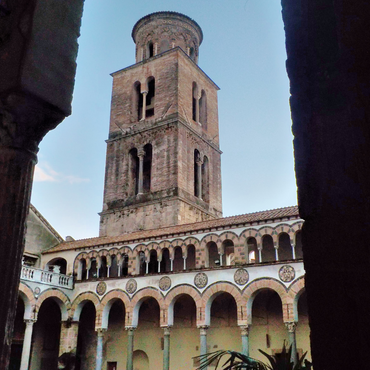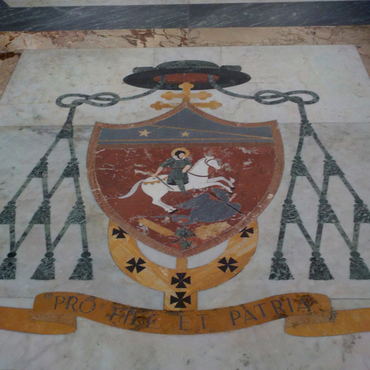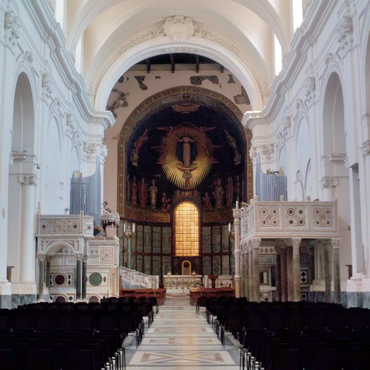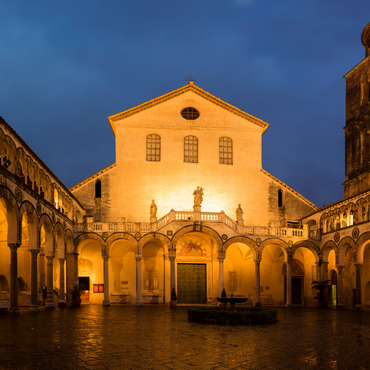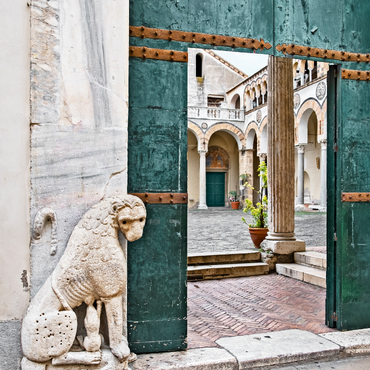The Cathedral
The Cathedral of Salerno
Originally, in place of the current Cathedral, stood the church dedicated to Santa Maria degli Angeli, in turn built on a Roman temple. In this church, in 1080, the bishop Alfano I found the relics of St. Matthew. Traces of the remains of the apostle had been lost after the previous discovery in the year 954, near Paestum.
The bishop of Salerno communicated the extraordinary discovery to Pope Gregory VII, who, exultant of joy, replied by opening the letter with these words: We give heartfelt thanks to the divine piety, the condescension of which, by supreme mercy, has revealed to us a great treasure, which will bring benefit to the whole world.
Alfano I is well aware that all of Christianity expects a worthy abode for the relic of one the four evangelists. So he decided to build a new and splendid cathedral where Saint Mary of the Angels stood. He already had a project in mind that is inspired by the cathedral of Montecassino, abbey where he stayed with his friend and spiritual guide, Abbot Desiderio, the future Pope Victor III.
The financier of the enterprise is none other than Robert Guiscard, a Norman prince who settled in Salerno and who cannot miss the opportunity to show all his devotion.
However, the space for the imposing work is not enough and for this reason it is necessary to demolish another church, consecrated to St. John the Baptist. In addition, some Salerno patricians donated additional neighboring properties. The cathedral can thus occupy an area of approx 7000 square meters. The works continued from 1080 to 1085.
The Cathedral was consecrated in 1084 by Pope Gregory VII himself, who fled from Rome because of Emperor Henry IV, who is hunting him. Tired, after a months, the pope finishes his days in Salerno. His remains are still kept inside the Cathedral today. Odd is that the following year also the two protagonists of the construction of the Cathedral, Robert the Guiscard and the bishop Alfano I also died.
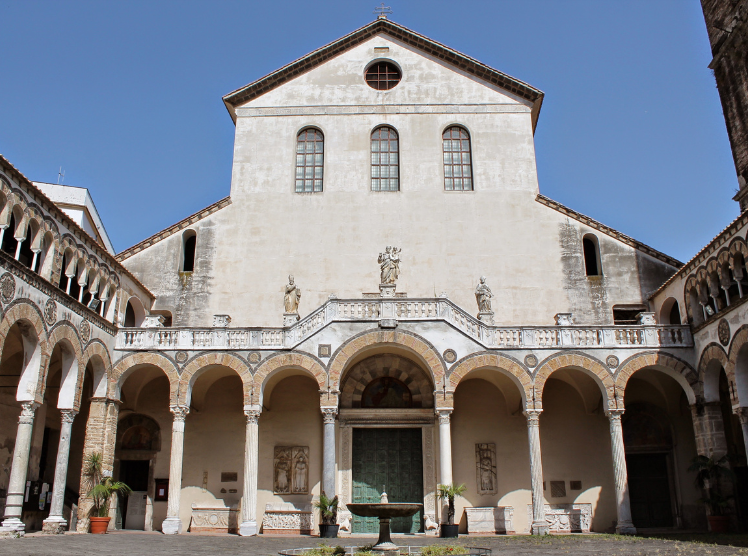
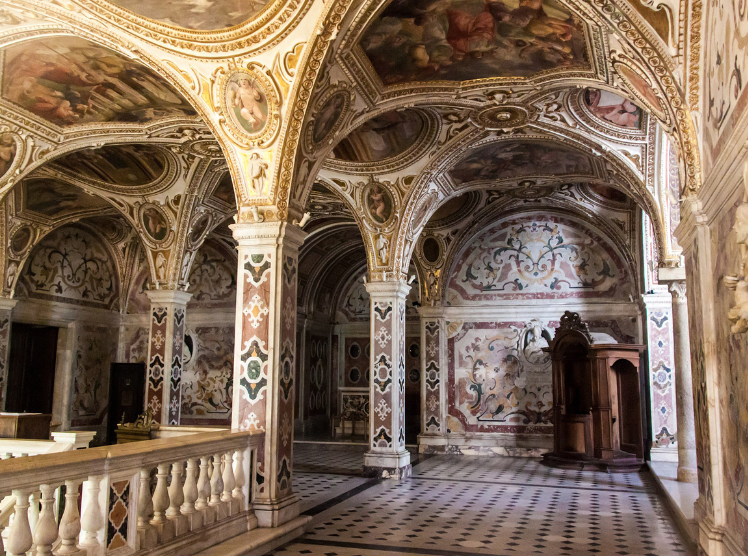
An overview of history, culture and tradition
The Cathedral has a length of about 80 meters and a width of 32. It consists of a quadriportico, a basilica, a crypt and a bell tower, added later.
Initially, a fountain was placed in the center of the atrium, composed of large basin of Egyptian granite with a Medusa head. The fountain was used for the ablutions of the faithful, so that they were worthy to enter in the temple. In 1825, however, King Francis I of Bourbon, more on a whim than out of necessity, did bring the fountain to Naples, to the Villa Reale. Therefore today, in the quadriportico, in place of the original there is a smaller tub.
The style of the Cathedral is Romanesque. Guiscardo brings the best builders from Normandy, to aid artists from Salerno and Amalfi. Characteristic is the wooden cover, which rests on two series of columns, with capitals probably derived from temples of existing Roman buildings. Among the most beautiful elements of the Cathedral it is possible to admire the pulpits, the dividing wall and the mosaics of the transept. Precisely the latter reveal the typical decorative taste of Byzantine art.
Finally, in the crypt there is the tomb of Saint Matthew, precisely under the main altar of the Cathedral. The two bronze statues of the Saint rest on an elegant marble base, one close to the other. The work was done at the beginning of the 17th century, a period which also dates back to the restoration of the entire crypt in baroque style.
The relics of St. Matthew are also known for an apparently inexplicable phenomenon: the miracle of the "Manna". From the day they were found, in fact, they would cyclically ooze a liquid chemical substance, precisely called "Manna", in a particular occasion, the patronal party, on 21 September. However, the miracle has not occurred for a century and a half, even if below the altar dedicated to the Saint, it is possible to admire the urn in which the liquid was collected.

